

King’s Cliffe, the birthplace of Walter Newbon (1750-98), is a village in the north of Northamptonshire, 10 miles south of Stamford and 15 miles west of Peterborough. The presence of the Newbon family there can be traced throughout the 17th and 18th century, but neither earlier nor later. King’s Cliffe and its neighbouring villages of Apethorpe, Blatherwycke and Fotheringhay, where members of the Newbon family also lived, are all attractive and well preserved, their buildings built from the same distinctive stone as those of most other villages in the area. Today this is a quiet, largely unspoilt and little-known part of central England, well worth exploring. King’s Cliffe is nowadays as quiet as its neighbours, with a population of less than a thousand, but in centuries past it was home to a large annual fair, at which time the Newbons’ bakeries must have seen a boost to trade. The fair made King’s Cliffe the most important village between Stamford and Oundle and in the 19th century it was still described as a ‘pretty large village’.
The fullest description of the village of King’s Cliffe, its buildings and its history can be found in the Victoria County History for Northamptonshire (published in 1906), extracts from which are printed below. For details of the Newbon family in King’s Cliffe and other information, see also the following pages:
The fullest description of the village of King’s Cliffe, its buildings and its history can be found in the Victoria County History for Northamptonshire (published in 1906), extracts from which are printed below. For details of the Newbon family in King’s Cliffe and other information, see also the following pages:
Northamptonshire, the early home of the Newbon Family The Newbon Family of Northamptonshire
Records of King’s Cliffe Maps of King’s Cliffe
Records of King’s Cliffe Maps of King’s Cliffe
Victoria County History (1906)
King’s Cliffe: Clive (until xiv cent.); Kingsclive (xiv-
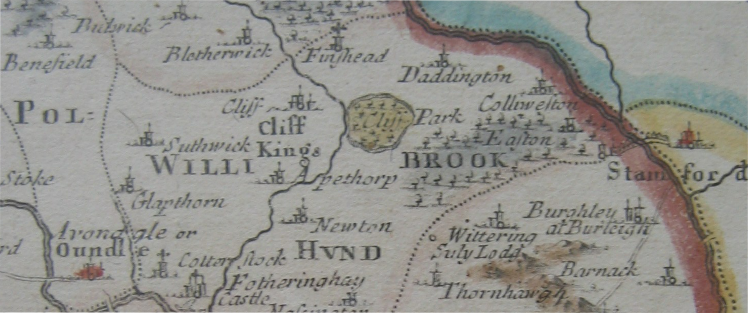
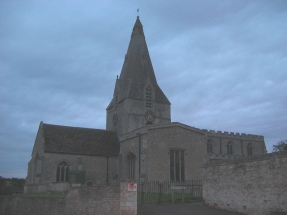
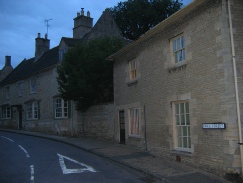
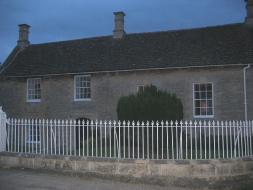
[In many documents King’s Cliffe is also often referred to by the Latin version of its name, Cliffe Regis; on maps it is often simply Cliffe]
The parish of King’s Cliffe is in may ways one of the most interesting in this district. A bailiwick of Rockingham forest, of which it formed a part, took its name from the village....... As its name denotes, the parish was closely connected with the royal house, and has only been for about a century in private hands. It is one of the largest parishes in the neighbourhood.... The Willow Brook, which forms its western boundary for a short distance, runs close beside the village, and widens near the church into a lake. .... Several good roads converge at King’s Cliffe, the chief being from Blatherwycke, Apethorpe, Easton on the Hill, and Wansford.
The parish of King’s Cliffe is in may ways one of the most interesting in this district. A bailiwick of Rockingham forest, of which it formed a part, took its name from the village....... As its name denotes, the parish was closely connected with the royal house, and has only been for about a century in private hands. It is one of the largest parishes in the neighbourhood.... The Willow Brook, which forms its western boundary for a short distance, runs close beside the village, and widens near the church into a lake. .... Several good roads converge at King’s Cliffe, the chief being from Blatherwycke, Apethorpe, Easton on the Hill, and Wansford.
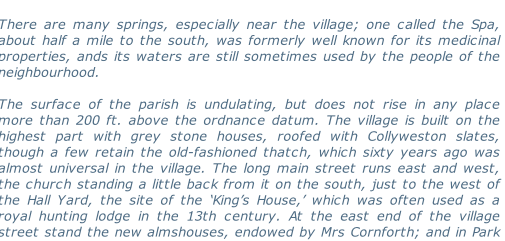
Street, branching from the main street to the north are the almshouses, built by John Thorp..... Near them is the school, incorporating a good 17th-century hall, and associated with William Law the celebrated divine, and on the road to Apethorpe is the public library founded by him.
King’s Cliffe was at one time the most considerable town in the district and had a market on Tuesdays, now long discontinued, and a three days’ fair on the vigil, day, and morrow of St. Luke, especially for its own turning ware, which flourished until about thirty years ago. Both market and fair and permission to take toll on those occasions as was done in other parts of the kingdom were originally granted by Henry III. They were discontinued in the 15th century when King’s Cliffe passed through a period of depression owing partly to disastrous fires and partly perhaps to the fact that it was no longer a royal residence, but remained in the king’s possession and had no private owner to interest himself in its prosperity. In a survey taken for Henry VI by petition of the inhabitants in 1439, many of the cottages were returned as waste, and in consequence Henry reduced the ferm from £62 to £40 for ten years because of the waste and decay of the place. An extensive fire took place in 1462, when over a hundred houses were consumed, the ferm being entirely remitted for two years on this account. In 1604, however, James I for the relief of the poor of the town renewed Henry III’s grant of a [Tuesday] market and [the St Luke’s Day] fair. Both market and fair are accounted for in the Parliamentary survey of King’s Cliffe in 1650, but the profits are small, only £2 in all to the lords of the manor. Morton, whose history was published in 1712, places King’s Cliffe in his list of market-towns, ‘though scarce thought worthy of the name.’ The fair for one day only was held until the last half of the 19th century. One curious privilege in connexion with it was that any house during its continuance by merely placing a bough outside the door might become a licensed house for the sale of beer, etc. Beer tasters were appointed by the vestry meeting the day before the fair to investigate the quality of the beer sold.
Another sign of the old time prosperity of King’s Cliffe is the number of tradesmen’s tokens, chiefly belonging to the 17th century, which still exist. One, dated 1659, belonged to Thomas Law, grocer, the father of William Law, author of The Serious Call.
William Law (d.1761) was born here in 1686..... His interest in his native place was constant, and in 1727 he founded a school of fourteen girls at King’s Cliffe; in 1740 he retired there for the remainder of his life, carrying out in his code of living the principles he had laid down in his most famous work, published in 1728, A Serious Call to a Devout and Holy Life, adapted to the State and Condition of all Orders of Christians.
The parish was enclosed in 1813; the award is in the custody of the clerk of the parish council. Among the place-names found in this parish are Constable’s Holm, Westhay Field, and Bailliff’s Nook. The population in 1901 was 983.
Manor
King’s Cliffe was a royal manor, part of the ancient demesne of the crown. It is only within the last hundred years that it has come permanently into private hands. In 1086 King’s Cliffe was rated at one hide and two and a half virgates, with a mill. Among the tenants was a priest.... Throughout the reigns of the Norman and Angevin kings the manor remained in the hands of the crown, and after 1154 appears frequently in the Pipe Rolls. From the reign of Edward I until the 18th century King’s Cliffe was frequently granted to the queen of England as dower..... In 1612 James I granted the manor for the first time outside the royal family to Sir Thomas Howard, later earl of Berkshire, on a sixty years’ lease, with right of holding court-leet and court-baron and all other perquisites and privileges generally belonging to the lord of the manor. The ferm was still the old amount of £62, £40 rent from the copyholds and £22 profits if demesne lands, etc. Next year the tenants of the manor, which consisted at that time except for one freehold entirely of copyhold land, bought the lease for £1,600 from Sir Thomas Howard, and the manor was still in the tenure of the township of King’s Cliffe when it was taken in to the hands of the Commissioners for the Sale of the King’s Lands about 1650.
Charles I granted the fee farm rent of the manor, nominally amounting to £62, but with reprises to only £12, to Henry earl of Holland and other servants of Queen Henrietta Maria as part of her dower. King’s Cliffe was sold by the commissioners for the sale of the King’s lands in the Commonwealth to John Menhire and Thomas Banks, but it returned to Queen Henrietta Maria immediately after the Restoration, and was granted after her death in 1665 as part of the dower of Catherine of Portugal to certain of her servants for ninety-nine years. The next lessee of the manor was Brownlow earl of Exeter, and the trustees of his son in 1812 finally bought it from the crown for the sum of £3,000. The Marquis of Exeter, his descendant, is now lord of the manor.
A ‘house of the king’ at King’s Cliffe is referred to as early as the reign of Henry II, and frequently later until the 15th century. There were appurtenant to it fishpools, which were kept in repair by the men of the manor, assisted sometimes by the neighbourhood, and traces of them can still be seen in the Willow brook. This house was probably of the nature of a hunting-lodge, and it seems from the number of times wine is ordered to be carried there to have been frequently visited by John and Henry III, and on one occasion the pasture of the park at Clive is ordered to be kept for the food of the animals to be driven there against the winter for the larder of the king.
The expenses of celebrating divine services in the chapel of King’s Cliffe are accounted for in the reign of Henry III. A survey of the manor was taken for the king in 1272, when the buildings were in good condition, only a few windows and doors needing repair, and there was plenty of fish in the fish-pools. Queen Margaret was granted in 1305 timber for repair of her manor at King’s Cliffe, and firewood for the use of of her household there, and game as much and as often as she liked. Edward I and III both made occasional visits to the house. In the 15th century it ceased to be used as a royal residence, and is described as a waste site about 1450, and as ashes have been found in the foundations on the site to the east of the church its remains were probably burnt down in the great fire of 1462.
Park
The park of Cliffe was first mentioned in the reign of Henry III, when deer was frequently granted out of it to various lords. About 1339 two parts of the park of King’s Cliffe were enclosed by the tenants of King’s Cliffe and Woodnewton, who petitioned next year that this action might not be taken as a precedent. Nevertheless, in the next reign carpenters and other workmen were ‘arrested’ to fence Queen Anne’s park at Cliffe. The park was not thrown open for some time after the disappearance of the king’s house, for in Leland’s day ‘Cliffe Park was partly waullid with stone and partly palid.’ The keepership of the park was granted in 1517 to David Cecil, sergeant-at-arms, and Richard Cecil, page-of-the-chamber, in survivorship. In 1592 Elizabeth granted Cliffe Park with all herbage, pannage, and other appurtenances, to Thomas Compton and others as the assigns of Robert earl of Essex, at a rent of 53s. 4d. Lord Burghley must either have bought the park from the earl, or received a new grant of it from the queen after his disgrace, for among Burghley’s possessions at his death in 1598 was Cliffe Park, lately belonging to Robert earl of Essex. The Marquis of Exeter now owns the park. Lord Burghley is said to have disparked it, but it was still to a certain extent separate from the ordinary lands of the manor in the 17th century, when Dr. Michael Hudson, vicar of King;’s Cliffe, who has become famous by his heroic death at Woodcroft Castle in 1648, appeared in a suit concerning the tithes of the park of Cliffe.
There was a mill rendering twelve pence at King’s Cliffe in 1086; in the reign of Henry VI there were two mills appurtenant to the manor, a water-mill and a corn-mill. In the 17th century there were two corn-mills which were in 1650 under one roof. These mills were often leased separately from the rest of the manor. [One of these mills may well have belonged to members of the Newbon family at exactly this time.] The present corn-mill of the village is on the Willow brook, just south of Hall yard. There is also a fine windmill. [It is unfortunately not known which of these premises would have been used by the millers of the Newbon family]
King’s Cliffe was at one time the most considerable town in the district and had a market on Tuesdays, now long discontinued, and a three days’ fair on the vigil, day, and morrow of St. Luke, especially for its own turning ware, which flourished until about thirty years ago. Both market and fair and permission to take toll on those occasions as was done in other parts of the kingdom were originally granted by Henry III. They were discontinued in the 15th century when King’s Cliffe passed through a period of depression owing partly to disastrous fires and partly perhaps to the fact that it was no longer a royal residence, but remained in the king’s possession and had no private owner to interest himself in its prosperity. In a survey taken for Henry VI by petition of the inhabitants in 1439, many of the cottages were returned as waste, and in consequence Henry reduced the ferm from £62 to £40 for ten years because of the waste and decay of the place. An extensive fire took place in 1462, when over a hundred houses were consumed, the ferm being entirely remitted for two years on this account. In 1604, however, James I for the relief of the poor of the town renewed Henry III’s grant of a [Tuesday] market and [the St Luke’s Day] fair. Both market and fair are accounted for in the Parliamentary survey of King’s Cliffe in 1650, but the profits are small, only £2 in all to the lords of the manor. Morton, whose history was published in 1712, places King’s Cliffe in his list of market-
Another sign of the old time prosperity of King’s Cliffe is the number of tradesmen’s tokens, chiefly belonging to the 17th century, which still exist. One, dated 1659, belonged to Thomas Law, grocer, the father of William Law, author of The Serious Call.
William Law (d.1761) was born here in 1686..... His interest in his native place was constant, and in 1727 he founded a school of fourteen girls at King’s Cliffe; in 1740 he retired there for the remainder of his life, carrying out in his code of living the principles he had laid down in his most famous work, published in 1728, A Serious Call to a Devout and Holy Life, adapted to the State and Condition of all Orders of Christians.
The parish was enclosed in 1813; the award is in the custody of the clerk of the parish council. Among the place-
Manor
King’s Cliffe was a royal manor, part of the ancient demesne of the crown. It is only within the last hundred years that it has come permanently into private hands. In 1086 King’s Cliffe was rated at one hide and two and a half virgates, with a mill. Among the tenants was a priest.... Throughout the reigns of the Norman and Angevin kings the manor remained in the hands of the crown, and after 1154 appears frequently in the Pipe Rolls. From the reign of Edward I until the 18th century King’s Cliffe was frequently granted to the queen of England as dower..... In 1612 James I granted the manor for the first time outside the royal family to Sir Thomas Howard, later earl of Berkshire, on a sixty years’ lease, with right of holding court-
Charles I granted the fee farm rent of the manor, nominally amounting to £62, but with reprises to only £12, to Henry earl of Holland and other servants of Queen Henrietta Maria as part of her dower. King’s Cliffe was sold by the commissioners for the sale of the King’s lands in the Commonwealth to John Menhire and Thomas Banks, but it returned to Queen Henrietta Maria immediately after the Restoration, and was granted after her death in 1665 as part of the dower of Catherine of Portugal to certain of her servants for ninety-
A ‘house of the king’ at King’s Cliffe is referred to as early as the reign of Henry II, and frequently later until the 15th century. There were appurtenant to it fishpools, which were kept in repair by the men of the manor, assisted sometimes by the neighbourhood, and traces of them can still be seen in the Willow brook. This house was probably of the nature of a hunting-
The expenses of celebrating divine services in the chapel of King’s Cliffe are accounted for in the reign of Henry III. A survey of the manor was taken for the king in 1272, when the buildings were in good condition, only a few windows and doors needing repair, and there was plenty of fish in the fish-
Park
The park of Cliffe was first mentioned in the reign of Henry III, when deer was frequently granted out of it to various lords. About 1339 two parts of the park of King’s Cliffe were enclosed by the tenants of King’s Cliffe and Woodnewton, who petitioned next year that this action might not be taken as a precedent. Nevertheless, in the next reign carpenters and other workmen were ‘arrested’ to fence Queen Anne’s park at Cliffe. The park was not thrown open for some time after the disappearance of the king’s house, for in Leland’s day ‘Cliffe Park was partly waullid with stone and partly palid.’ The keepership of the park was granted in 1517 to David Cecil, sergeant-
There was a mill rendering twelve pence at King’s Cliffe in 1086; in the reign of Henry VI there were two mills appurtenant to the manor, a water-
Advowson
The advowson of the church belonged to the priory of Merton, in Surrey, having been given by William Gifford, bishop of Winchester, temp. Henry I, to Bernard the scribe, a benefactor of that house, to which it subsequently paid a pension of 20s. It was granted in 1551 to Edward Lord Clinton, who sold it immediately to Sir Walter Mildmay, from whom it descended to his grand-daughter and heiress, Mary, wife of Sir Francis Fane, afterwards Earl of Westmoreland, whose descendants are now patrons.
Church
The church of All Saints stands on the south side of the village, the ground sloping down to the east and south from the churchyard, which lies chiefly on the south and west side of the church.
The advowson of the church belonged to the priory of Merton, in Surrey, having been given by William Gifford, bishop of Winchester, temp. Henry I, to Bernard the scribe, a benefactor of that house, to which it subsequently paid a pension of 20s. It was granted in 1551 to Edward Lord Clinton, who sold it immediately to Sir Walter Mildmay, from whom it descended to his grand-
Church
The church of All Saints stands on the south side of the village, the ground sloping down to the east and south from the churchyard, which lies chiefly on the south and west side of the church.
West

The building is cruciform, with a central tower, north and south transepts, chancel 30ft. by 17ft., its axis being north of that of the tower, and nave 54ft. 6in. long by 18ft. wide, with a north aisle 12ft. wide, a south aisle 11ft. 6in. wide, and north and south porches.
The tower is the oldest part of the the building, and dates from about 1100. It is the only remaining part of a church which had a tower between nave and chancel, without transepts, the north and south walls of the tower being external. If any alterations were made to this building before c.1220, they have left no trace, but about that time a belfry stage and spire were added to the tower, and its east and west arches rebuilt and widened.... The north transept seems to have been built c.1260, but the south transept has no features of so early a date..... The aisles and south transept appear to have been brought to their present form in the 15th century.
The font is at the west end of the north aisle, and has a round bowl with four quatrefoils alternating with circles; the shaft is also round, flanked by four smaller shafts with moulded capitals of the 14th century. [This is presumably the same font in which the members of the Newbon family were baptised.]
The plate comprises a silver cup, cover paten, and flagon of 1751, two bread-
There are four bells, the treble by Henry Penn, 1714, the second of 1619, inscribed -
Multi vocati pauci electi 1619 Richard Bardon Nicolas Baili Gardian
Mistris Maria Hartleie Widdo Casthis (sic) bell 1619
Mistris Maria Hartleie Widdo Casthis (sic) bell 1619
the third by T. Mears, 1832, the fourth of 1592, and the tenor by Thomas Eyre, 1738.
Park Street, where the Newbon family owned copyhold property in the mid-1700s
To Top of Page
Further Information
Many books on Northamptonshire contain information on King’s Cliffe, but it is generally not very detailed. The Internet probably now offers richer pickings. Among the numerous websites offering information about the area, the following contain particularly useful comments on King’s Cliffe with some very interesting photographs:
All contents of this website © 2008 Stephen Willis
Part of Robert Morden’s map of Northamptonshire featured in the 1695 edition of William Camden’s Britannia, a topographical survey of England
made in the Elizabethan period. The importance of King’s Cliffe compared to its neighbouring villages can be clearly seen
made in the Elizabethan period. The importance of King’s Cliffe compared to its neighbouring villages can be clearly seen
| Site Map |
| Background to my research |
| Background to the surname NEWBON |
| Documents available and sources used |
| Name index |
| Walter Newbon's descendants |
| Northamptonshire Newbons |
| Redbourn, Hertfordshire |
| James Shelton Newbon |
| Henry Newbon |
| The Crickmer family |
| The Newbon Family and the City of London |
| Charles Evans Newbon |
| Joseph Newbon |
| The Brockelbank Family |
| The United Wards' Club of the City of London |
| John Newbon |
| The Children of John Newbon |
| World War I |
| Walter Thomas Newbon |
| The Newbon Family of Northamptonshire |
| Northamptonshire, the early home of the Newbon Family |
| King's Cliffe |
| Records of King's Cliffe |
| Maps of King's Cliffe |
| Links with elsewhere |
| News 2014 |
| News 2013 |
| News 2012 |
| News 2011 |
| News 2010 |
| News 2009 |
| News 2008 |
| Updates |
| To do |
| Guestbook |